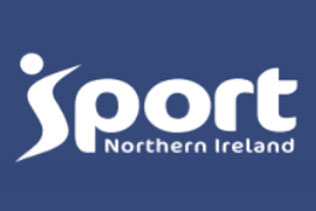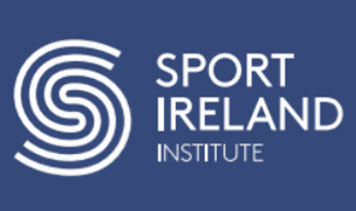
Summary
Para swimming has been a part of the Paralympic programme since the first Games in 1960 in Rome. The sport has become highly competitive and it is among the largest and most popular events in the Paralympic Games.
Male and female athletes with a physical, vision or intellectual impairment are eligible to compete. Athletes are classified based on their functional ability to perform each stroke.
World Para Swimming uses the same rules as its Olympic counterpart, World Aquatics, with some modifications where needed. Some athletes, due to the nature of their impairment, may be allocated certain exceptions in accordance with the World Para Swimming Rules & Regulations. For example, a swimmer with an arm amputation receives an exception to start on the backstroke event with one hand.
IPC Paralympic Sports A-Z:
Events
Events
Para swimming events available are the 50m and 100m backstroke, breaststroke and butterfly, 50m, 100m, 200m, 400m, 4x50m, and 4x100m freestyle, 150m and 200m individual medley, and 4x100m medley. The events available are subject to a swimmer’s classification.
The Paralympic Games showcases 146 medal events, whilst other World Para Swimming competition host 182 medal events.
Rules and Equipment
Races take place in a standard 50m pool, with swimmers starting in a variety of different ways: from a standing start, using a dive start, sitting on the starting platform, and in the water. The start used is most usually dependant on the degree of functionality the athlete has. While competing, no prostheses or assistive devices may be worn.
Para swimmers are seeded into heats according to entry times. Seeding also determines the lane each athlete will swim in, with the faster seeds being closer to the centre lanes of the pool. The top eight swimmers in each event progress to the final.
Athletes are required to wear a bathing suit that does not aid their speed, buoyancy, or endurance.
Athletes may receive an exception to the rules according to their impairment. Please access the WPS Codes of Exception here.
Documents:
Classification
Eligible impairments
| Hypertonia | Impaired Muscle Power |
| Ataxia | Leg Length Difference |
| Athetosis | Impaired Passive Range of Movement |
| Limb Deficiency | Vision Impairment |
| Short Stature | Intellectual Impairment |
Classification description
Para swimming combines athletes with different types of physical impairments, so you might see an amputee (missing limb) competing against an athlete with a spinal cord injury (muscle weakness) or cerebral palsy (lack of coordination). The impact of each athlete’s impairment on swim performance, however, is similar within each sport class.
For illustrated explanation please click on the button below.
Sport classes
The sport class names in para swimming consist of a prefix “S” for backstroke, butterfly, and freestyle events, “SB” for breaststroke events, and ‘SM’ for medley events. The prefixes stand for the strokes and the number indicates the sport classes. The higher the number of the class, the lower the disability, e.g., class 1 is for athletes with a severe disability and class 10 for athletes with a minimal disability.
| S1-10, SB1-9, SM1-10 | Athletes with a physical impairment |
| S11-13, SB11-13, SM11-13 | Athletes with a vision impairment |
| S14, SB14, SM14 | Athletes with an intellectual impairment |
| Not Eligible (NE) | Does not have an eligible impairment type and/or meet the minimum impairment criteria for Para-swimming |
To evaluate the impact of impairments on swimming, classifiers assess all functional body structures using a point system and ask the athlete to complete a technical assessment known as the water test.
How to apply for classification:
Please find the classification pathway here.
To be eligible to apply for a national classification, athletes must:
- Be affected by at least one of the impairments considered eligible by World Para Swimming
- Be a member of an affiliated Swim Ireland Club
- Be training for a minimum of 12 months within a club structure
- Be able to swim at least 50m of three strokes
- Have competed in at least three competitions at club/regional level
- Be minimum of 12 years old
- Have the classification application signed off by a licensed Swim Ireland coach
- Athletes who fulfil the criteria above should have the Medical Diagnostics Form completed and submitted to classification@paralympics.ie.
Athletes who don’t meet the list of criteria above may still be evaluated by the classifiers by prior arrangement. However, he/she will only receive a provisional class in order to facilitate them to compete this year.
Classification Masterlist:
This list includes active athletes who have been classified at national and/or international level. Click here to access the Masterlist.
Resources:
Get Involved
If you are interested in getting involved in swimming, please check out the pathway below.
Club:
- The first step to become a Para swimmer is to join a club affiliated with Swim Ireland – Click here to find a club.
- Swimmers should be concentrating on following the recommended swimming long term athlete development.
- Competition at club and regional level.
- Athletes can apply for a provisional classification within Paralympics Ireland to receive an eligibility indication for Para swimming.
Development Squad:
- Swimmers older than 12 years old, who have been training within a club structure and have competed in at least three club and/or regional events should apply for a National Classification within Paralympics Ireland.
- To be considered for a place on the Development Squad athletes must meet the criteria as set out in the selection policies section. The criteria include the analysis of the times according to the swimmers’ classification.
- Swimmers should still focus on the long term athlete development within their club structure.
- Club Coach should engage with the Paralympics Ireland Pathway coach to submit an annual skeletal training and competition plan.
Pathway Coach – Kevin Williamson: kevin@paralympics.ie
Performance Pathway Squad:
- Athlete, club coach and Paralympics Ireland Para Swimming team have agreed performance goals.
- Swimmers on the Junior and Senior Squad will be supported on the process of being International Classified within World Para Swimming.
- Swimmers must participate in compulsory designated swim meets.
- Compulsory attendance at domestic training camp(s).
- Submission of annual skeletal training and competition plan from Club Coach.
- Swimmers should have a current licensed Swim Ireland coach.
Paralympic Squad:
- Athletes must complete the online monitoring system weekly.
- Athlete, club coach and Paralympics Ireland Para Swimming team have agreed performance goals.
- Swimmers must participate in compulsory designated swim meets.
- Compulsory attendance at domestic and overseas training camp(s).
- Swimmers’ Club Coach must submit the periodized training and competition annual plan.
- Swimmers should have a current licensed Level 3 Swim Ireland coach.
- Athletes must be committed to the Paralympic Squad Programme.
- Signing of Paralympics IrelandI Athlete Agreement.
________________________________________________________________
Governing Body
National
Paralympics Ireland (currently have the responsibility to prepare athletes to compete at all international competitions including European Championships, World Championships and Paralympic Games)
International
Medal History
Para Swimming Medal Table
| Competition | Gold | Silver | Bronze | Total |
| 2020 Tokyo Paralympic Games | 1 | 1 | ||
| 2019 WPS Worlds | 2 | 2 | ||
| 2016 Rio Paralympic Games | 1 | 1 | ||
| 2015 IPC Worlds | 2 | 2 | ||
| 2013 IPC Worlds | 1 | 3 | 4 | 8 |
| 2012 London Paralympic Games | 2 | 2 | ||
| 2010 IPC Worlds | 0 | |||
| 2008 Beijing Paralympic Games | 1 | 1 | ||
| 2006 IPC Worlds | 0 | |||
| 2004 Athens Paralympic Games | 1 | 1 | ||
| 2002 IPC Worlds | 1 | 1 | ||
| 2000 Sydney Paralympic Games | 2 | 2 | 4 | |
| 1998 IPC Worlds | 1 | 1 | ||
| 1996 Atlanta Paralympic Games | 2 | 2 | ||
| 1994 IPC Worlds | 2 | 2 | ||
| 1992 Barcelona Paralympic Games | 1 | 1 | ||
| 1988 Seoul Paralympic Games | 0 | |||
| 1984 Stoke Mandeville & New York Paralympic Games | 2 | 2 | 2 | 6 |
| 1980 Arnhem, Netherlands Paralympic Games | 0 | |||
| 1976 Toronto Paralympic Games | 0 | |||
| 1972 Heidelberg Paralympic Games | 1 | 1 | ||
| 1967 Israel Paralympic Games | 1 | 1 | 2 | |
| 1960 Rome Paralympic Games | 1 | 1 |
Summary
Events & Rules
Classification
Get Involved
summary
events










